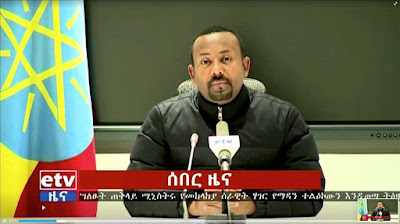- In May a group calling itself the Oromo Liberation Army vowed to wage “total war” against Mr. Abiy’s government.
- In August, the OLA entered an alliance with the T.P.L.F. aimed at toppling Mr. Abiy — a pact that has borne fruit in recent months as the two groups fight their way down a major highway toward the capital, Addis Ababa.
The Tigray conflict has its roots in tensions that go back generations in Ethiopia.
The country is made up of 10 regions -- and two cities -- that have a substantial amount of autonomy, including regional police and militia. Because of a previous conflict with neighboring Eritrea, there are also a large number of federal troops in Tigray. Regional governments are largely divided along entrenched ethnic lines.
Before Abiy Ahmed came to power, the TPLF had governed Ethiopia with an iron grip for decades, overseeing a period of stability and economic growth at the cost of basic civil and political rights. The party's authoritarian rule provoked a popular uprising that ultimately forced Abiy's predecessor, Hailemariam Desalegn, to resign.
In 2018, Abiy was appointed by the ruling class to quell tensions and bring change, without upending the old political order. But almost as soon as he became prime minister, Abiy announced the rearrangement of the ruling coalition that the TPLF had founded -- the Ethiopian People's Revolutionary Front, or EPRDF, which was composed of four parties -- into a single, new Prosperity Party, ostracizing the TPLF in the process.
****
A year ago, T.P.L.F. forces attacked a federal military base in Tigray and tried to steal its weapons. The group has said it struck preemptively because federal forces had landed in a neighboring region days earlier in preparation for an assault.
Hours later, Mr. Abiy ordered a military offensive against the Tigrayan leadership and its security forces.
The government restricted internet and phone communications and declared a six-month state of emergency in Tigray. But the Ethiopian military, which was dominated by Tigrayan officers, was divided, and fighting erupted between rival units inside the region, according to American officials.
- November 2020: Eyewitnesses told CNN that a group of Eritrean soldiers opened fire in November on Maryam Dengelat church in Dengelat village, in Tigray's east, while hundreds of congregants were celebrating mass. Dozens of people died over three days of mayhem, with soldiers slaughtering local residents, displaced people and pilgrims, they said.
- CNN has previously reported that soldiers from neighboring Eritrea have perpetrated many of the extrajudicial killings, assaults and human rights abuses in the Tigray region.
Prime Minister Abiy Ahmed of Ethiopia ordered a military offensive against the government of the country’s northern Tigray region in a national address in November 2020.
A parade for the 45th anniversary of the establishment of the Tigray People’s Liberation Front, in Mekelle, in February 2020.





No comments:
Post a Comment